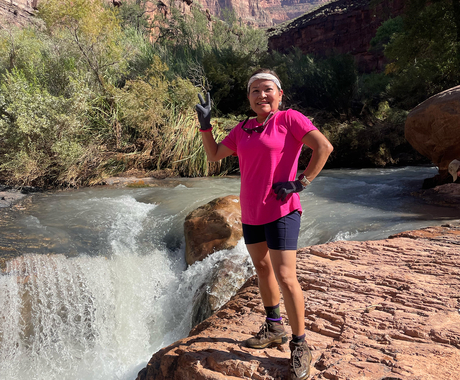By Kathie Starkweather, former staff member
We all discriminate.
It does not matter if you are a person of color or not, female or male, young or old, gay or straight. We all discriminate.
I’m not talking about intentional discrimination, like denying housing based on gender or the color of skin. I’m talking about nonconscious discrimination that is caused by the way our brains work; and we are completely unaware.
We started as a species living in pretty dangerous and volatile situations. We had to know fairly quickly if our neighbors showed up to eat us for dinner or if they came to join us for dinner. We learned to react immediately. Once we made connections between what was safe and what was not, the nonconscious part of our brains made that decision and reacted accordingly.
Our brains still function in the same way. The system is similar to a filing cabinet with two major sections. The first section is gender and the second is race/ethnicity.
The problem with this brain structure is that when we react, we immediately pull out the “information” we have stored in our nonconscious. Often times, this is not correct information.
Some of the information comes from socialization, experiences and the media. We can’t help but absorb what we hear. This information creates our intuition, or first impression.
Consequently, we make assumptions about our new Asian neighbor or the retired man who moved into town. And without realizing or intending to, we treat that person based on the “information” we have in our nonconscious.
This has profound impacts on community cohesion and success.
The Saturday Night Live skit “Pat” (if you aren’t familiar, ask anybody over 50) is a perfect example of nonconscious bias. Pat was an androgynously dressed person and nobody could tell if Pat was male or female. The other characters spent their time trying to figure it out, and also struggled with how they should interact.
The characters were not able to reach into their filing cabinet and react to what they “know” about a male or female. They were blocked from nonconsciously pulling out their reality of how to interact with a male compared to a female. We all do the same, but in “Pat,” there was a bump in the road that did not allow them to get that “information.” They focused on trying to determine Pat’s gender before they could really interact. Crazy, huh? But true.
Why is this information important to you and your community? When we allow hidden biases to take hold, we make instant decisions about people. We could miss opportunities to add a richness to our communities that is otherwise overlooked.
Create a welcoming community that strives to look at the person and not the stereotype. New people bring new ideas, new families and new economic growth.
Welcome diversity. Lack of diversity in our towns has been identified as one of the reasons youth do not want to return.
Starting today, try putting your own bump in the road. When you see someone who does not look like you, stop for just a second and ask yourself, “So what?” Take just a moment to see that person as a person, and not as a man, woman, Latino, Latina, old, young, community outsider, etc. It’s not easy, but by recognizing our own biases, we take a step toward not acting on them.
Having biases is normal, we all have them. Challenging ourselves to think beyond those biases will make our communities better.
Featured photo: In rural communities across the nation, immigrant families from various ethnic backgrounds have meant a change in population. Center for Rural Affairs staff works with community leaders to confront challenges when language, religion and ethnic backgrounds are so diverse.





